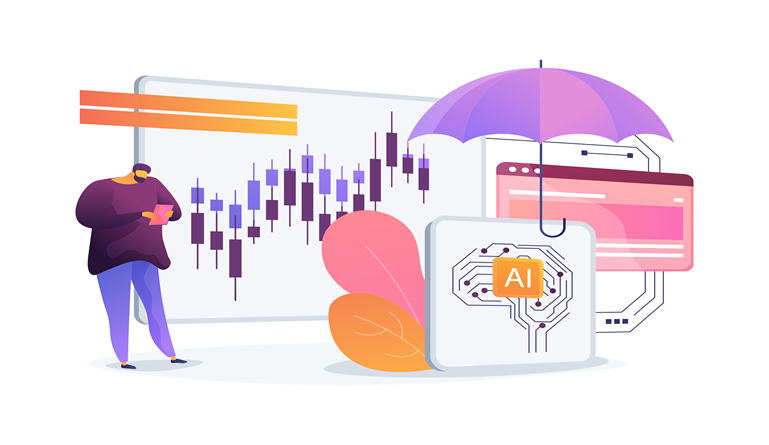Financial service companies are at a pivotal moment. Faced with intense market pressures across the sector — agile disruptors, complex legislation, digital native users, and the legacy of a global pandemic — technology adoption is therefore no longer merely a competitive edge, but an absolute necessity. This places fintech at the front and center of the financial service industry. Simply said, the widespread use of cloud computing as well as big data analytics — along with new and emerging methods of communication and changing client expectations, are transforming how (as well as what) financial products are offered.
This is what the fintech revolution is all about generating value for customers and firms through the unprecedented use of technology.
How Did the Fintech Revolution Come About?
Originally, financial technology, or Fintech, referred to tech employed in the back-end systems of existing financial organizations. Currently, the phrase refers to an economic sector comprising enterprises that employ technology to boost the effectiveness of financial institutions. Several things are included in fintech, from Microsoft’s latest Industry Cloud for Financial Services to scrappy startups, crypto developers, and accounts automation.
The fact that the fintech revolution is not exactly a recent trend is noteworthy. The banking business has benefited from technological improvements such as credit cards, ATMs, digital stock trading, banking mainframe computer systems, and e-commerce over the past 50 or more years.
Although these technologies went mainstream and were extensively adopted by banks as well as their clients during the last half century, the conventional banking industry was not endangered. In fact, they flourished, even further. Nowadays, however, fintech companies aren’t simply supplements to financial services; instead, they are looking at completely replacing banking services.
That is the power of the fintech revolution; it is such a game-changer that the World Bank even authored a paper titled “The Fintech Revolution: A Threat to Global Banking?” to explore its implications.
As a result of the 2008 financial and economic crisis, banks were bound by more stringent regulations that required them to devote more time and resources to their back offices. Previously lavishly compensated by banks, front-office, customer-centric talent resources shifted into the tech and startup sector. The technologies that assisted in modernizing and automating bank back offices were also major change agents. Breakthroughs like the rise of blockchain and the universalization of the cloud happened parallelly.
The outcome? Fintech businesses have been able to establish business models that sidestep the structural requirements associated with a bank while offering better and more efficient customer service.
Example of the Fintech Revolution at Work: Investment Banking
While examining the practice of stock investing, it is obvious how the fintech revolution has impacted the industry. In addition to bringing structure to the overall business of purchasing stock, technology has also democratized access, which is why financial inclusion is one of the central themes of the fintech revolution.
Imagine a retail investor purchasing stocks thirty 30 years ago. Their decisions were based on guesswork, with little access to the real marketplace or performance metrics. They would have to deal with traders and financial advisers in their area, restricting their access to those who had the time and financial means to live in metropolitan locations.
Today, the emergence of digital Demat Accounts and mobile banking applications has not only facilitated the purchase and sale of stocks. Rather, it has also enabled new access points to in-depth market intelligence.
A password-protected login provides access to a digital dashboard that provides an overview of past, current, or future investments. New technologies such as artificial intelligence (AI), as well as machine learning (ML), are changing the game by providing individualized recommendations to retail investors according to their inclinations.
Top Trends that Define the Fintech Revolution
Seven technologies, specifically, have led to the paradigmatic shift called the fintech revolution, where digitization is no longer a simple “tool” for banks and lenders. These are:
1. Open banking
Open banking is a backend architectural system that enables banks to share consumer data with fintech companies or other financial (or non-financial, like e-commerce) organizations. Through application programming interfaces (APIs), a website or app may access the bank’s database and share data.
2. Big data
Big data refers to vast quantities of unstructured and structured information which banks and financial organizations may use to predict customer behavior and develop strategies. For instance, a publicly accessible social media post (unstructured, big data) on your 30th birthday could trigger mortgage product recommendations.
3. Robotic process automation (RPA)
Robotic process automation is utilized to automate back-office tasks such as client enrollment, security screening, credit card processing, and mortgage servicing. The financial services business will use RPA to complete tasks faster, save money, and increase organizational efficiency. Also, customers will have to adjust to increasingly automated operations and their own inefficiencies (e.g., false positives in fraud investigations).
4. AI and ML
Due to its capacity to analyze real-time patterns, machine learning, and artificial intelligence have enabled banks to process huge volumes of data and generate insights. This has minimized the duration and expense of a multitude of financial processes while improving their outcomes. AI-based credit risk checks and chatbots are two core staples of the fintech revolution as we know it.
5. Blockchain
Powered by cryptocurrencies and distributed ledger technologies, blockchain is a crucial component of the financial revolution. With blockchains, organizations may preserve data, authenticate and identify individuals, verify transactions, sign agreements, and boost traceability.
6. Neobanks (built on the cloud)
Neo or digital-only institutions have disrupted the hegemony of just a handful of industry giants. They are far less costly to establish since no physical branches are required. Since the majority of transactions will happen online, the customer also significantly benefits.
7. Embedded finance
Embedded finance technology makes it possible for non-financial platforms to include payments for loans, healthcare, card payments, and financial instruments. It is particularly advantageous for e-commerce businesses and their customers, as it facilitates complex transactions at an unprecedented pace.
The Fintech Revolution in Emerging Markets
While the impact of technology in financial services is everywhere, the effects of the fintech revolution is probably the most felt in emerging markets and developing economies.
As of July 2022, as reported by the World Bank, over 1.4 billion individuals didn’t have access to bank accounts. Globally, only 76% of individuals have an account with a bank, despite an enormous rise in banking penetration over the last decade. The digitalization of financial services has played a crucial role in expanding financial inclusion and diversifying the industry.
India’s Unified Payments Interface (UPI), a mobile-enabled system, has helped increase digital payments in the country by 50% yearly over the previous five years.
Similarly, developing economies are the leaders when it comes to employing digital currencies. 10 of the top 20 nations, according to the 2022 Global Crypto Adoption Index are classed as lower-middle-income countries, while 8 were higher-middle-income. As of the middle of 2022, over 100 central bank digital currencies (CBDCs) were under development all across the globe, with Nigeria’s eNaira debuting in October 2021 and the Bahamas’ sand dollar launching the year before.
In developing nations, where war, inflation, and natural disasters may have an inordinate economic impact, alternative credit and payment solutions have an essential function in strengthening financial resilience. Particularly for the informal sector, which is central to most emerging markets, alternative payment, and credit systems can make all the difference to business success.
Remittances are another key source of income for many in emerging markets, completely transformed by the fintech revolution.
What’s Next for the Fintech Revolution?
Will fintech replace conventional financial services? The jury is still out. Yet, these companies and enterprises are challenging the market by enhancing user experience, capturing more data, enhancing access, and lowering operating expenses. Even more intriguing will be the expansion of this technology beyond the financial industry. For example, blockchain will provide safe and transparent exchanges for assets such as automobile titles and gemstones.
With so many opportunities, the fintech revolution will keep influencing the daily lives of business leaders and everyday users in the coming years.





